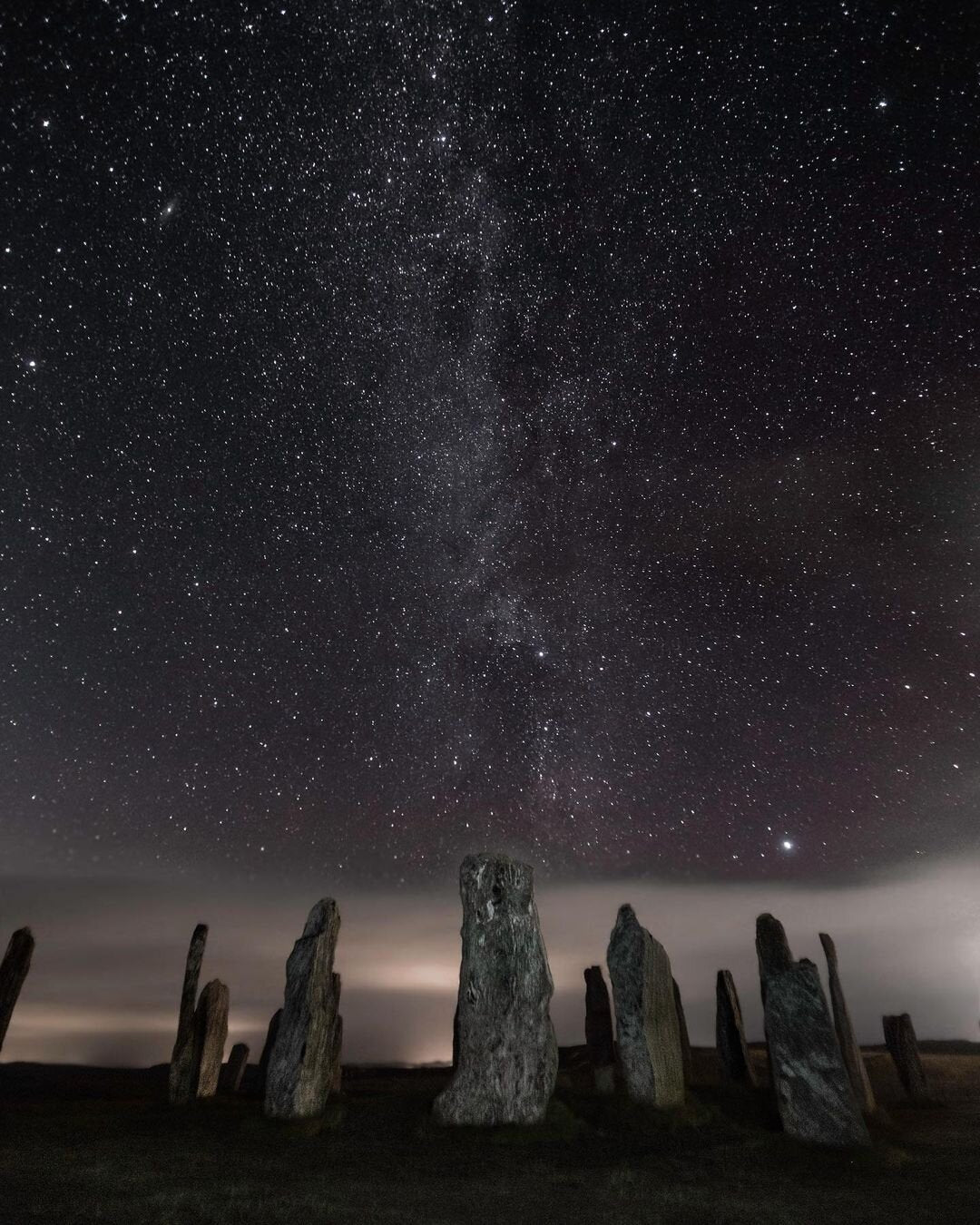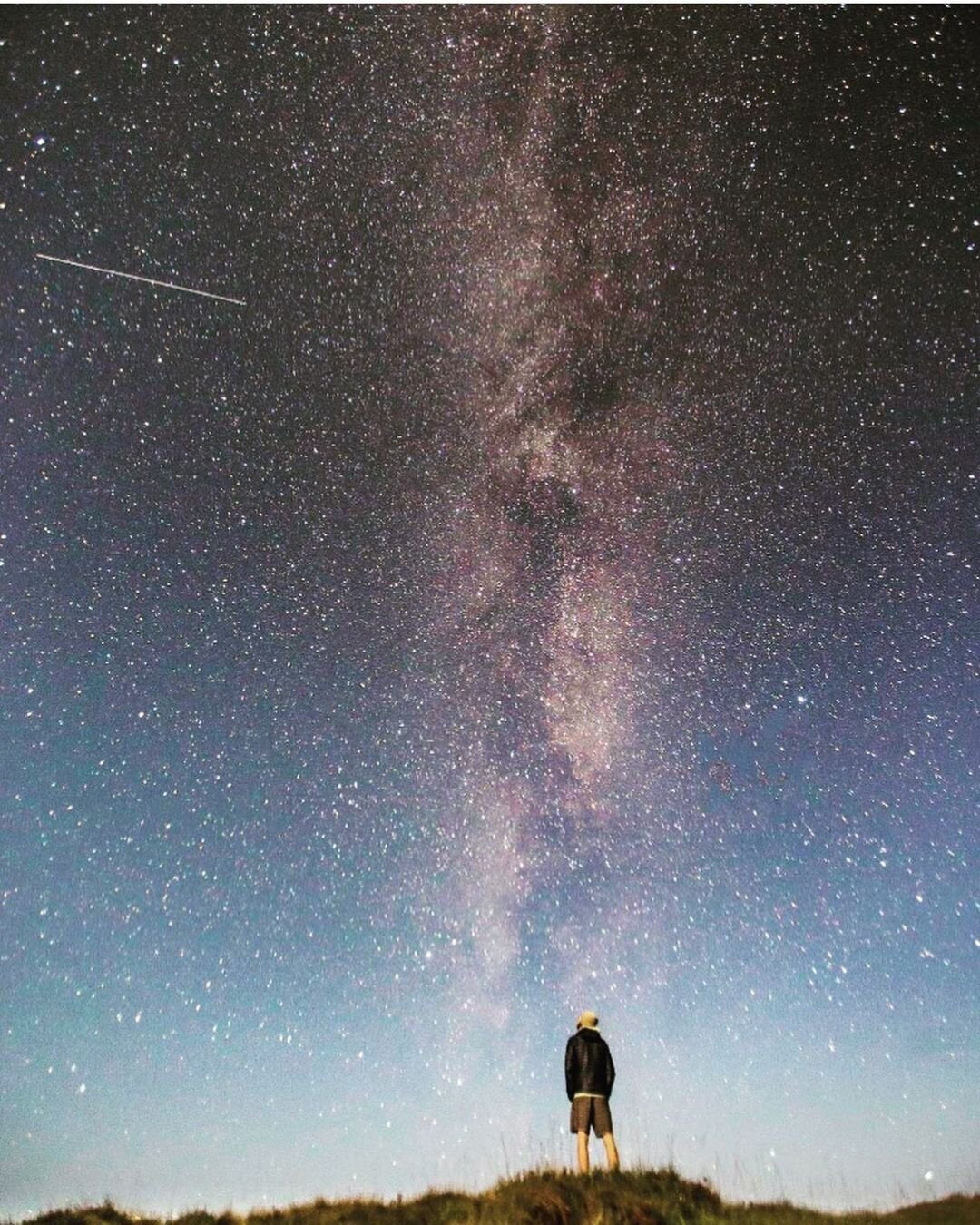Your Cart is Empty
Extra 10% Off Sale Items - Discount applied in basket
Extra 10% Off Sale Items - Discount applied in basket
Extra 10% Off Sale Items - Discount applied in basket
Extra 10% Off Sale Items - Discount applied in basket
April 09, 2021 7 min read
This week is National Dark Skies Week and alongside our article onthe best places to go stargazing in Scotland, we wanted to share some tips with those of you who want to try their own hand at capturing our incredible starry skies. We’ve been in awe of some of Tristan Cameron Harper's night sky photography and even sell some of his prints in our store, so we asked for his help on this one and he didn’t disappoint.
Tristan is a former professional ice hockey player turned Scottish mountain guide and photographer with a love of exploration. When he’s not climbing and hiking mountains or getting up close with wildlife, he can be found sharing the magical aspects of Scotland via guided exploration tours or through the visual journey of his imagery.

Shooting Star - Photo by @tristancameronharper
How best to photograph the stars?
The number one tip which is pretty obvious would be make sure it looks as if it is going to be a clear night. You can use a combo of weather maps or just use your eyes, watching the clouds etc. It's best to make sure that you are somewhere that has less light pollution and the moon is not full/new, unless you are using the moon backlight for a different type of shot or want a shot of the moon itself.
A full moon tends to obscure the stars, so you want to focus on when it’s in its crescent or waning/waxing modes, basically when there is less illumination from the moon.
Best time of year
Rule of thumb with stargazing in general is winter nights give the best views of the night sky, and when it’s cold and crisp outside that’s when you’ll want to wrap up, grab your flask and get out there as you’ll get the best views. This doesn’t at all mean that summer nights are a no go, but they do provide a slightly different experience in the night sky, and that includes with photography too, so you need to make a little bit more effort.
Plan your shot
You catch some gems by doing things spontaneously and by looking out and chasing the shot, but with photography scouting your location is useful and saves some time setting up and especially to grab a window before any clouds move in. The majority of the time l have already explored the location l plan to photograph the stars with a shot in mind that I aim to capture, so making sure you have a good idea of the area you plan to shoot (and if there’s anything that’ll obscure your view) beforehand will make it easier for you to capture the image you have in mind.

Black Cuillins on the Isle of Skye - Photo by @tristancameronharper

Composition
It's also useful to find a good static composition, maybe a rock structure, mountain, building or some sort of object that can give the audience a good focal point and additional texture with the end result being a starry sky above and a lovely shot of the composition you have chosen.
Learn a little astronomy
Another obvious but helpful thing is to know the sky, and where the stars are. There are apps that can make it easier, but the whole point of getting out to view the night sky is to get away from all the day to day tech and phones. Even when taking images.
You don’t need to be a full on astronomer, just learn and have an idea of where some of the most basic constellations are, even just something like Orion's Belt, so you can gauge position, what’s around you and what you’re wanting to capture.
Also it makes it easier when there are amazing night sky celestial events, and for even gauging a good part of the sky to catch meteor showers, as sometimes they are more prominent radiating from a particular constellation even though they appear throughout.
Learn the difference between the constellations, and planets vs stars. Remember usually that what flickers and sparkles is a star, and if it doesn’t and stands out as brighter it’s usually a planet. Let the moon and stars guide you, our ancestors did it with the naked eye, but you can also buy some good binoculars for an easy pinpoint. Opticron, Celestron and Nikon have good ones for the night sky that you can buy without breaking the bank. Each of us will be attracted to different things. Gauge what you're wanting to capture and go for it. Don’t forget to enjoy the moment, and that flask if you continue into the cold winter nights, as it makes it much more enjoyable when you’re warm as you might be there a while sometimes trying to get that shot.

Standing Stones of Callanish - Photo by @tristancameronharper
It can take a bit of patience
I wouldn’t say that l have a favourite image of the night shots l have captured as they all have a different feeling and meaning for me. I have had different experiences for each, including how difficult or how long I’ve had to wait to capture them but if l had to pick one image it would most likely be the Standing Stones of Callanish.
l have been to the Isle of Lewis quite a few times and every time the weather has been terrible, even though I had wanted to capture the stones under the starry sky for a long time, so it was still on my list to catch that moment. But one time which happened to be Hogmanay and staying in a cottage not far from the stones, the weather was terrible again, and I kept looking outside whilst the wind and rain blasted against my face and checking the weather forecast on my phone every minute hoping there would be an opening in the sky.
I just remember having a cup of tea inside, almost giving up then getting the feeling to go, put the half full cup of tea down, jumped in the truck and drove about 20 minutes to the standing stones. With such luck, the sky had opened up allowing me to capture some amazing images of the Callanish Standing Stones, photographing the North and South angles getting some great shots of the Milky Way and Orion’s Belt above. It was a great night, and that moment made it. I was absolutely thrilled with the result and extremely grateful to get that opportunity.
I love capturing ancient structures under a clear starry sky as l believe and feel it brings many of these ancient structures to life and think about what our ancestors would have witnessed quite often in areas without all the obstructions and light pollution we have today. Plus it's always very special for me to be able to share some of these moments that not many get to witness or experience, and maybe I can inspire people with these magical moments to take a break away from everything.

Forest and Moon - Photo by @tristancameronharper

Milky Way - Photo by @tristancameronharper
Favourite places to go to stargaze
I do love capturing moments in the Scottish Highlands under a starry sky especially because it's somewhere that I am very familiar with, especially as a Scottish Mountain Leader and doing guiding. Every time I am out guiding or exploring l always seem to picture myself capturing a specific place under the night sky wondering how different it will look. And it’s amazing how different the night sky can look throughout the year.
Some of my favourite places in Scotland to stargaze are Glen Clova, Loch Coruisk in Skye, Outer Hebrides and the Western Isles. Glen Clova is my local area so l have explored it quite a bit especially during lockdown, and it’s a familiar place for me alongside the majority of the Cairngorms, and being so familiar with a lot of the mountain routes low and high l sometimes find myself going out at odd hours of the night and simply walking for a couple of hours being led deeper into the Highlands stargazing. There is a familiarity there walking in the Cairngorms navigating as best I can trying to utilise the stars like our ancestors did, something I am still learning but makes stargazing that much more enjoyable.
For people stargazing in Scotland I think it’s important to mention the Galloway Dark Sky Park, it’s a great nature reserve with forestry, glens, lochs and hills. Wildlife and great views of the night sky. It’s full of good walking routes, you are completely away from the light pollution and there is an observatory (which has powerful telescopes). Plus if you’ve got wee ones you can take them along, and teach them about the constellations and different cultural meanings of them and the stars, which can be good to help them get to know the night sky and spot things easily. It’s a great day out for adults and kids alike.
If I was going to name a few of my favourite places abroad for stargazing it would have to be the Himalayas, Sahara desert, Iceland and even Las Palma in Gran Canaria.
There are so many wonderful and magical places to stargaze no matter where you are, it’s great to get to know the night sky away from home just like the nature and wildlife. I would definitely say, if you find yourself in a part of the world you love always make that extra effort to stargaze, it really puts into perspective how small but yet how lucky we are to exist in this magical universe, and that no matter where we go, we have that view above us in common and who doesn’t love checking out the stars? It can give us that connection to what's around us as sometimes people need to know it’s value in order to make an effort to preserve it.
Comments will be approved before showing up.
